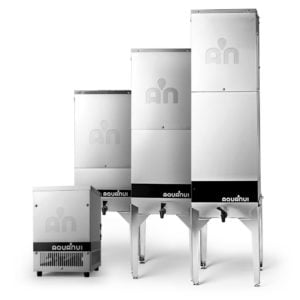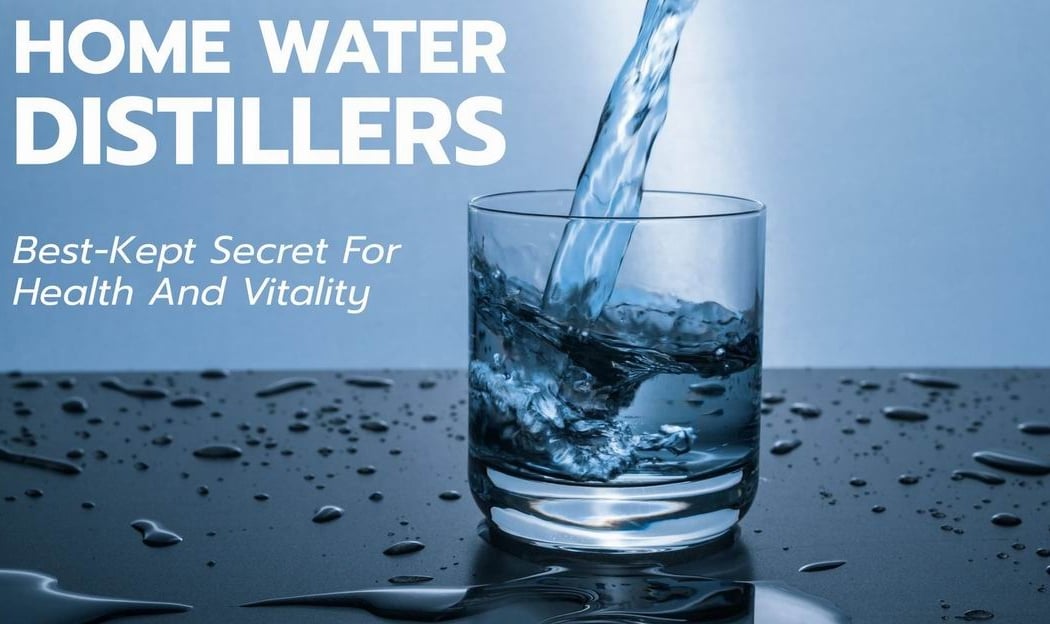Of the half-dozen small practices in my life that give me more energy and stamina, I’ve found that drinking distilled water is one of the most effective. I’ve written about this before, and that generated questions about home distillation systems that I’ll answer here.
When steam from boiling water is condensed back into liquid, the result is distilled water. Home distillation systems are one of the best ways to make virtually pure drinking water, and there are two reasons this matters.
This video explains the health benefits of drinking distilled water:
Drinking distilled water offers two benefits. Besides removing chemical and hormonal contaminants that are measurably present in some municipal water supplies, distilled water is also free of naturally occurring minerals such as calcium and magnesium.
But don’t we need these minerals? Yes, we do, but there are two strikes against getting them as dissolved solids in water.
First, the amount of minerals in even very hard water is insignificant compared to our daily requirements. You’d have to drink several hundred litres of hard water each day (containing 500 parts per million of dissolved calcium) to get your daily requirement of calcium in that way.
And second, minerals that are present in hard water are in what’s called “non-chelated” form. This makes them more difficult for your body to use, and somewhat troublesome to deal with biologically.
Eliminating waterborne minerals that end up as kidney stones and painful joint deposits is the main reason I prefer drinking distilled water.
Types of distillers
There are two main types of home distillers. A smaller unit costs $200 to $600 and sits on your countertop, much like a coffee maker. You fill it with about 3 litres of tap water, and depending on what model you choose, four hours later you’ll have three litres of distilled water sitting in a jug. The cost in electricity is less than 50 cents per batch.
My daughter has a countertop distiller like this for her family of five, and she runs it more or less constantly to keep up. It works, but it’s a fair amount of trouble filling and emptying each day.
Avoiding this kind of hassle is why there’s such a thing as automatic water distillers. This is the kind I installed at my house and I’m impressed.
Here’s a video on how an automatic water distiller works and the surprising stuff a distiller removes:
Automatic distillers are self-contained, floor-mounted units that connect to your home water supply. They fill themselves with tap water whenever necessary, they commence boiling on their own, then they gather the steam and condense it into distilled water before accumulating this purified water into an internal stainless-steel reservoir.
Automatic distillation units like this keep on filling and boiling by themselves until the reservoir is full. After that they shut off until you draw more water.
 The automatic distiller we have is an AquaNui 10G. It’s shown second from left in the image here. Everything AquaNui sells is made in the United States and the 10G model produces distilled water at a rate of about 1.5 litres per hour, with on-board storage for almost 40 litres.
The automatic distiller we have is an AquaNui 10G. It’s shown second from left in the image here. Everything AquaNui sells is made in the United States and the 10G model produces distilled water at a rate of about 1.5 litres per hour, with on-board storage for almost 40 litres.
So, what’s the advantage compared with a countertop distiller? Automatic distillers operate around the clock if needed, without intervention. All you do is draw water from the reservoir directly, or make use of a separate tap connected to a little dedicated pressure pump on the distiller. This option delivers distilled water to any sink in your house or your refrigerator.
Besides being interesting, I love our distiller because it gives me and my family better health and more energy that we can feel. The fact that the inside of our kettle always looks brand new and scale-free is an added bonus.

